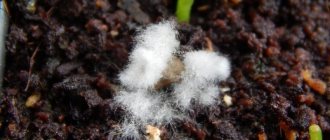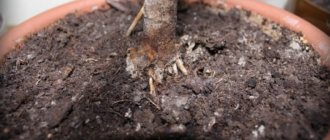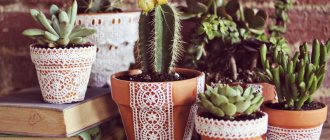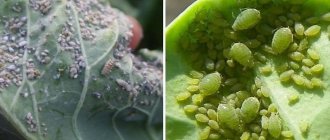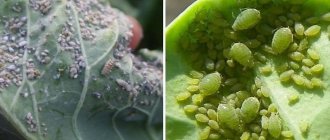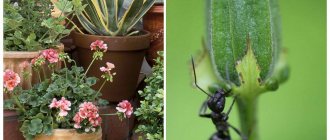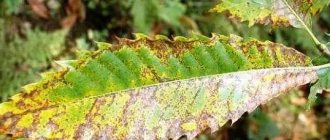Many people grow flowers in pots. This is both beautiful and useful. But sometimes owners encounter the following misfortune, like a white coating on the ground in pots. As experts say, the very fact of the appearance of plaque will not cause any particular harm to the plant, but the reasons that caused it can lead to the death of the flower. Let's figure out together the reasons for the appearance of plaque and how to deal with it. Let's also not forget about preventive measures, since it is better to prevent a disease than to treat it later.
Why does the soil in the pot become covered with a white coating?
In most cases, the primary formation of whitish deposits on the soil is a sign of improper care or, less commonly, a consequence of fungal infection. As a result, salt deposits appear on the surface or mold begins to grow.
Many flower growers, both beginners and already quite experienced ones, are faced with the problem of mold in a flower pot.
Substrate type
Ornamental plants cannot be planted in the first available soil. Often, a white coating on the flowers of indoor varieties appears only because the purchased substrate was intended for seedlings and is saturated with mineral fertilizers, while the plant is already an adult specimen that does not need intensive feeding.
You need to let the top layer of soil dry out a little.
In addition, the very nature and composition of the soil can lead to the described effect. “Heavy” soil is highly dense and promotes rapid evaporation of moisture due to the formation of capillaries. Salinization can also occur due to deterioration in the quality of the growing environment itself.
Care and watering regime
Excess moisture, as well as its lack, is often the reason why a white coating appears on the ground in flowerpots.
The main cause of white plaque is the wrong method of watering.
The following negative factors can also lead to its occurrence:
- Failure to comply with temperature conditions.
- Excessive indoor humidity
- Overfeeding (obvious excess of mineral fertilizers).
- Using too hard water.
Wrong pot
Beginning gardeners often understand failure to follow care recommendations as poor lighting or errors in watering mode.
Obstructed drainage at the bottom of the pot and, as a result, excess moisture causes a white coating to appear.
Few people think that such a non-obvious thing as a discrepancy between the volume of a flower pot and the size of the root system can cause similar problems: a tiny plant in a large space cannot cope with “developing” such an area.
You can simply remove all the white layer of soil and add new soil.
The result is the appearance of white soil and the questions: “Why does plaque appear on flower pots and how to deal with it?”
Additional Information. Very often, plaque formation occurs due to missing or poor drainage, as well as if water constantly accumulates in the stand.
Fungal infection
Powdery, fluffy or pronounced feather-like character of deposits, often accompanied by an unpleasant putrefactive odor, is a clear sign of the presence of fungus in the soil.
A white coating on the surface of the soil in a pot can be caused by the development of fungal microflora.
The reason for this can be either excess moisture or poor-quality soil. Typically, such mold is not harmful to plants that have gone through a period of rapid growth. However, this does not mean that nothing should be done. There are types of fungi that can be dangerous to humans.
Causes
Let's get acquainted with the common causes of the problem.
Improper watering
Most often, white plaque occurs due to excessive watering. The soil is regularly waterlogged, water actively evaporates: as a result, salts settle on the surface of the substrate. This phenomenon occurs especially often if watering is done with hard water from the tap.
If the waterlogging is significant and prolonged, in addition to the white coating, more serious consequences are possible: rotting of the roots, the appearance of black soil bugs. In this case, the plant not only does not bloom, it stops developing, and may even die.
Plaque is also possible when watering is poor and insufficient.
Hard water
It is advisable to water indoor flowers, regardless of their type and variety, with soft, settled water, without harsh impurities of salts and bleach. Often it is the presence of impurities in irrigation water that leads to the formation of a white coating on the soil, consisting of salts and lime.
Externally, salt-lime deposits look like small whitish granules, which can be easily removed from the pot. Immediately under the raid there is clean land. Typically, gardeners do this: they remove the plaque along with the top layer of soil, then add fresh soil.
Dry air
In this case, the moisture from the flower pot evaporates too quickly, and salts begin to accumulate on the surface of the substrate. Dryness leads to the soil becoming excessively salty: this fact negatively affects the development of the plant.
Too much fertilizer
Regular overfeeding of a plant in a pot will inevitably lead to the surface of the soil becoming covered with a white coating. In this case, the coating will consist of salts and minerals that the plant could not absorb.
Wrong choice of substrate
When purchasing ready-made substrate in a store, you should be careful. If you purchase soil for seedlings to grow an indoor flower, the appearance of a white coating subsequently is not surprising. The fact is that during its production, a large amount of stimulants and fertilizers are added to the soil intended for seedlings so that the seeds hatch faster.
Inappropriate potty
It is known that a pot that is only slightly larger than the volume of their root system is suitable for indoor plants. If you choose a container that is too large, the plant’s roots will not be able to cope with the volume of the substrate or process the moisture and nutrients entering the pot. As a result, a white coating appears on the surface of the soil.
White coating on flowers of indoor plants and soil: types of mold
In fact, there are several more fungi that infect the soil than is commonly believed, and not all of them are harmless to humans. Some of the most common types of mold found in home greenhouses include:
Mukor
"Classic" look. It is he who most often appears in flower pots. Affects the upper layers of soil. May cause an allergic reaction. In more severe cases it leads to mucormycosis.
There are many ways to get rid of mucor.
Sineva
Fungal plaque is bluish in color. Getting inside the plant, it destroys the very structure of the wood. The damaging effect appears very quickly.
Actinomycetes
Bacteria that can be found in any soil. Due to the ability to form the so-called branching mycelium, similar to a white coating on the ground, they are also classified as fungi.
They are raw materials for the production of antibiotics, but can cause some diseases.
Black mold
In fact, it comes in different shades, from light gray to blue-black. A very dangerous look. In humans it can cause severe respiratory diseases. Extremely difficult to remove.
Black mold is a common fungus.
There are known cases of the appearance of fungal formations both yellow and with a pronounced green tint.
The solution depends on the problem
Before taking action, you need to understand what mistake was made in caring for the flower. Hard water can be softened with citric acid in a proportion of 0.5 teaspoon per 1 liter of water. If the flower is planted in a pot that is too large, it should be replaced with a container of suitable capacity.
Purchased soil is often oversaturated with fertilizers, which also leads to the deposition of salts on the surface. In this case, the top layer of soil must be removed and a regular leaf substrate added instead.
Special preparations will help cope with fungal spores. It is necessary to treat the soil with foundationazole in a ratio of 2 g per 1 liter of water. If affected by rot, the flower must be transplanted into fresh soil treated with a fungicide.
It is recommended that all soil, even purchased in a store, be calcined before use. It is convenient to do this in a microwave oven.
It is useful to loosen the soil frequently to provide the roots with access to oxygen. If the soil is too heavy, then replanting into a loose substrate or partial replacement of the soil directly in the pot is necessary. It must have drainage holes.
How to get rid of white plaque on indoor flowers?
When mold appears, the best solution is to replant the flower. However, it is not always possible to carry out this procedure immediately.
Take care of your flowers.
In this case, it is recommended to do the following:
- Remove the top layer of soil (two, two and a half centimeters) to prevent contact of the fungus with the root system.
- Change the method and mode of watering. At a minimum, the soil should not be over-moistened.
- If the soil is heavy or dense, it must be carefully loosened. This will help remove excess moisture and help normalize gas exchange in the soil.
- Adjust the room temperature balance and humidity level.
If these methods fail to remove the white coating on the flowers of indoor flowerpots, then it is necessary to use disinfectants and also disinfect the soil.
The easiest way is to simply replace the soil in the flower pot.
As a last resort, the last resort is to transplant the flower to another place.
Transplantation as a method of struggle
If a plant is replanted as a result of the appearance of a fungus, everything will have to be changed: both the pot and the substrate. In this case, the soil must be disinfected, even if it has just been purchased. The fact is that fungal spores may still be present in the soil from the store, and the plant itself is often a source of mold. It is also necessary to disinfect the pot itself.
Do not spray the plant while you are getting rid of the fungus.
As an additional measure, you can add a little crushed charcoal to the soil - this will remove excess moisture. Sometimes a thin layer of quartz sand sprinkled on loose soil gives a good effect.
Important! Reusing plastic pots from infected plants is strictly prohibited!
Mold Control Products
As a rule, when fighting fungal diseases, special preparations – fungicides – are used to protect plants. Many of them can be used for both treatment and prevention.
There is less white and other deposits if you cover the top of the soil in a pot with expanded clay.
The most common is “Fundazol” or its analogues: “Topaz”, “Skor”, “Vitaros” - only 2 grams of the drug are needed per liter of water. However, it is very toxic (you need to be extremely careful when using it and wear protective equipment)!
Use less nitrogen fertilizers and more phosphorus-potassium fertilizers.
Therefore, as an alternative, some gardeners choose phytospirin or even metronidazole (tablet per liter of water) for bactericidal treatment.
Note! Fungicides should only be used as a last resort. You should try gentler remedies first.
Signs about a flower pot in a dream
When you dream of flowers in pots, this is one of the most favorable plots that predicts good luck and success in the future. Perhaps a great material reward awaits the person ahead, or he will buy expensive property. However, this interpretation is correct in the case when the flower did not fall and was dreamed of as blooming, green and fresh. If in a dream a person sees limp, dried flowers, then this may indicate troubles in the future. For example, there will be troubles at work, financial losses or quarrels in the family. When a flower falls off in a dream, it speaks of illness.
If in a dream a person dropped and broke an empty pot on the floor in the room, poured soil out of the pot, or broke it, then this may foretell discord in the family in the future, even divorce. Also, scattered earth at night speaks of illness, loss of loved ones or financial difficulties. It is worth considering that the prediction of dreams may depend on who dreamed of the flower pot. For example, if a young girl dreams of a beautiful flower, then a wedding awaits her. For older women, a blooming flower indicates a possible pregnancy, and for older ladies, such a dream promises the presence of diseases of the reproductive system.
White plaque on the ground: disinfection and disinfection
Unfortunately, most types of mold are not that easy to remove. Most recommendations on this issue boil down to replacing the soil and planting container. Moreover, a prerequisite is their high-quality disinfection. This requirement is due to the fact that the spores of some fungi are extremely tenacious.
Avoid any fertilizer while the flower is sick!
The best method is calcination - the earth or substrate is subjected to prolonged temperature heating (more than 90 degrees) for half an hour. You can use an oven or stove for this.
It is necessary to understand the characteristics of each disease in order to choose the right drugs for treatment.
An alternative option is steaming - you need to pour a little water into the pan and cover the top with gauze or a thin cloth. The prepared soil is poured onto the fabric and covered with a lid, after which the water should boil. Then you need to boil everything for at least 25-30 minutes, but it is advisable to keep the soil longer, so that later you won’t be surprised again why plaque appears on the pots of indoor plants!
For plants that require high humidity.
Popular folk remedies
If the mold has appeared recently and the lesion is small, you can do without strong chemicals. So, to treat the soil, gardeners use a weak solution of citric acid: 2-3 grams per glass or just lemon juice (squeeze the lemon into a cup of water). The plant should be watered no more than twice a month. This product is suitable for flowers that can grow in acidic soil.
Sometimes ordinary garlic is used for disinfection. To do this, several cloves are buried near the plant or an infusion is made. When watered, garlic saturates the soil with phytoncides, which suppress the development of pathogenic bacteria.
Proper care will help get rid of mold.
Adding wood ash to the soil, treating with potassium permanganate, and spraying with a solution of dry mustard also has a positive effect.
White plaque on the ground: warning and prevention
Prevention is always cheaper than cure.
Group plantings look very impressive.
This ancient wisdom applies to houseplants as well. The main activities can be mentioned:
- Systematic loosening of the soil.
- Proper pot size and drainage.
- Ensuring favorable temperature conditions and lighting.
- Competent and timely feeding.
- Using a substrate that is most suitable for a particular plant.
- Regular watering.
Watering can be rare, but should be plentiful.
Understanding the root causes of soil discoloration or the formation of powdery spots on the ground is only one aspect of solving home gardening problems. Sometimes it is simply impossible to determine why plaque appears on the pots of indoor plants, since the creation of favorable conditions for growth cannot be subject to strict regulations alone.
Flowers add mood to the home.
Thinking, trying, experimenting is the only recipe for all occasions.
What is efflorescence
The accumulation of salts on the soil surface is called efflorescence. They are formed due to the release of insoluble or poorly soluble salt deposits from the soil. Salty areas have the appearance of a whitish or yellowish crust, which can be mistaken for mold. Some formations may be similar to a fungus. But it should be borne in mind that white salt deposits, unlike other deposits, do not have a specific texture, but lie evenly over the pot, closing the pores of the soil.
Adult plants are practically not exposed to this scourge. Most often, a white coating is characteristic of young bushes or flowers transplanted into completely different soil composition. The greatest impact is on seedlings, which during their adaptation period are very weak and react strongly to any external changes that may relate to ambient temperature, amount of watering and fertilizing.
It is important to know! Efflorescence itself does not pose a threat to the life of the plant, but if the problem of deposits is not eliminated, the flower may die. With a thick layer of greenery, it becomes difficult to breathe and take nutrients from the soil.
